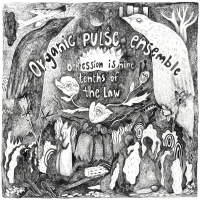Home » Jazz Articles » Compare & Contrast » Allison Neale & Bruce Turner: Across The Years
Allison Neale & Bruce Turner: Across The Years
Jazz has always been a music that can be fashioned from the most casual of acquaintances, but here it's the opposite case
 For years Bruce Turner was a stalwart of Humphrey Lyttleton's band, and for a period in the late 1950s and early 1960s he led his own Jump Band, a small group which took its cues from the John Kirby Sextet, a band that's hardly been over-used as a template. The Dirty Bopper was the only album Turner put out solely under his own name some decades into his lengthy career. The title refers to the name he was given by the ultra-purists among Lyttleton's audience when they learned of Turner having studied with Lennie Tristano. By contrast, Allison Neale's album is her first, and marks the arrival of a player working a stylistic seam not unlike Paul Desmond's, whose work always made the Dave Brubeck Quartet a worthwhile proposition.
For years Bruce Turner was a stalwart of Humphrey Lyttleton's band, and for a period in the late 1950s and early 1960s he led his own Jump Band, a small group which took its cues from the John Kirby Sextet, a band that's hardly been over-used as a template. The Dirty Bopper was the only album Turner put out solely under his own name some decades into his lengthy career. The title refers to the name he was given by the ultra-purists among Lyttleton's audience when they learned of Turner having studied with Lennie Tristano. By contrast, Allison Neale's album is her first, and marks the arrival of a player working a stylistic seam not unlike Paul Desmond's, whose work always made the Dave Brubeck Quartet a worthwhile proposition.
The guitarist Dave Cliff is a common factor between the two albums, and his work emphasizes the group nature of the music making. The other thing that unites the two dates is how well integrated both groups are -Jazz has always been a music that can be fashioned from the most casual of acquaintances, but here it's the opposite case. An underlying coherence is common to both dates, and this seems born of the fact that both groups enjoy musical relationships that are anything but casual.
Given the nature of his stylistic allegiances it's unsurprising that Turner has little trouble in coming up with a fusion of Jimmy Giuffre in terms of compositional style and Willie Smith in terms of instrumental evocation on Toddington Toddle. By contrast, Neale's approach is less disparate, although her inclusion of a couple of Gigi Gryce compositions might hint at the influence of a source even less widespread than Desmond. Her sound and approach is well suited to Gryce's lines, and her evocation of both pre- and post-bop developments is helped in no small part by the fact that her playing has more momentum than Turner's. Her tendency to push at the beat and to phrase slightly ahead of it mark her out as a player who is out of step with a prevailing trend, especially in view of the fact that she tailors her playing to suit the composition and doesn't use it as a means for laying a glut of clinical virtuosity on the hapless listener.
 Both Neale and Turner double up, the former on flute and the latter on clarinet. Neale's flute playing has a studied yet quicksilver air; it amounts to a whole lot more than dynamic contrast. In common with a player like James Spaulding, with whom she shares little overt stylistic allegiance, her flute work is distinctive enough to be regarded in its own right. Turner had by the time of the album discussed here been playing clarinet in Lyttleton's band for a number of years, and his Ellingtonian evocation on the opening bars of Have You Met Miss Jones? positively betrays a stylistic debt of gratitude whilst also emphasizing the primacy of individuality over abundance of technique.
Both Neale and Turner double up, the former on flute and the latter on clarinet. Neale's flute playing has a studied yet quicksilver air; it amounts to a whole lot more than dynamic contrast. In common with a player like James Spaulding, with whom she shares little overt stylistic allegiance, her flute work is distinctive enough to be regarded in its own right. Turner had by the time of the album discussed here been playing clarinet in Lyttleton's band for a number of years, and his Ellingtonian evocation on the opening bars of Have You Met Miss Jones? positively betrays a stylistic debt of gratitude whilst also emphasizing the primacy of individuality over abundance of technique.
In times like these, when the idea of European jazz seems to involve little more than a glacial exterior as a means for counteracting macho posturing, these two albums evoke instead the timeless verities of small groups of players improvising together regardless of location.
Allison Neale Quartet Melody Express (33 Records 33JAZZ103)
Bruce Turner The Dirty Bopper (Upbeat Jazz URCD147)
Tags
PREVIOUS / NEXT
Support All About Jazz
 All About Jazz has been a pillar of jazz since 1995, championing it as an art form and, more importantly, supporting the musicians who make it. Our enduring commitment has made "AAJ" one of the most culturally important websites of its kind, read by hundreds of thousands of fans, musicians and industry figures every month.
All About Jazz has been a pillar of jazz since 1995, championing it as an art form and, more importantly, supporting the musicians who make it. Our enduring commitment has made "AAJ" one of the most culturally important websites of its kind, read by hundreds of thousands of fans, musicians and industry figures every month.


















